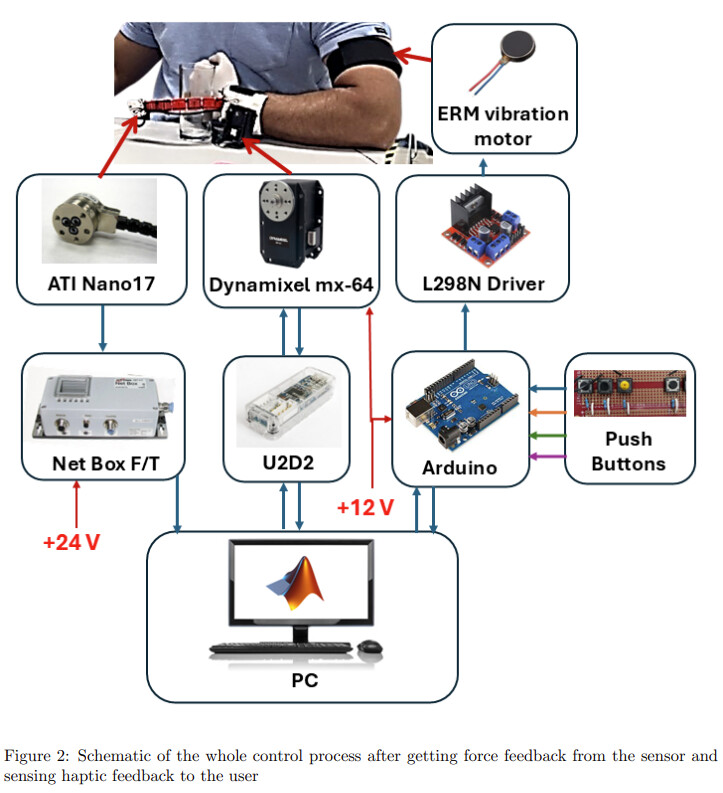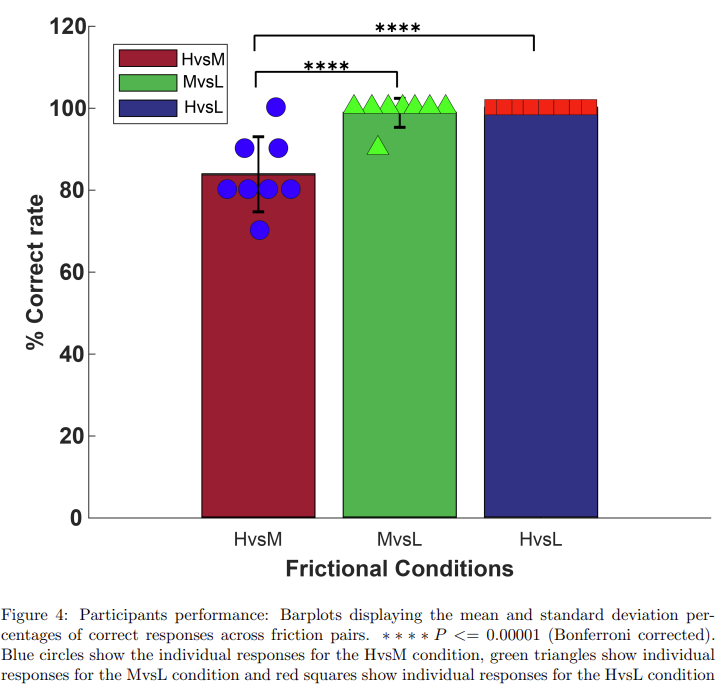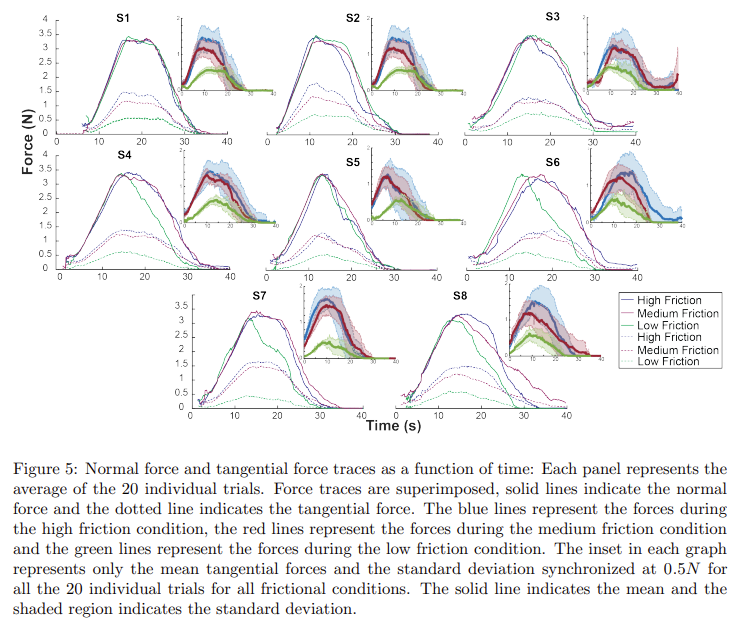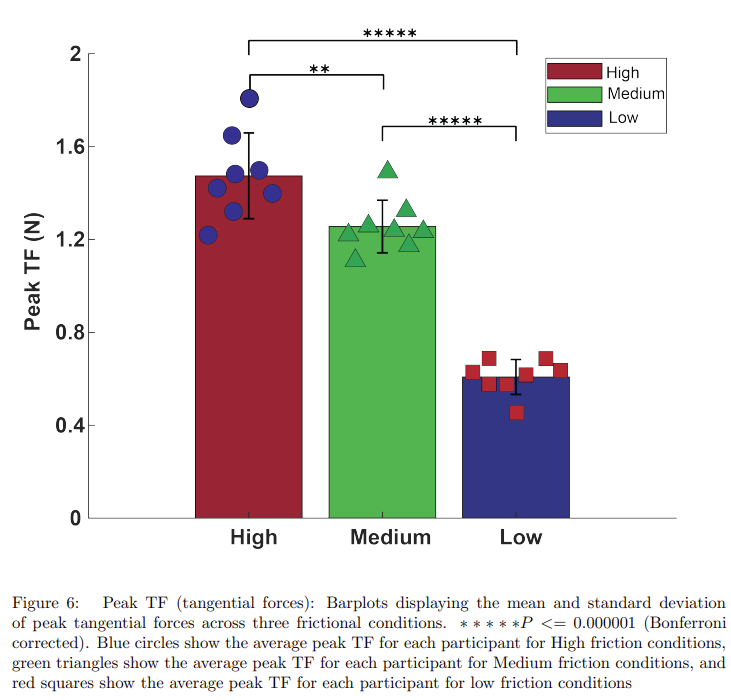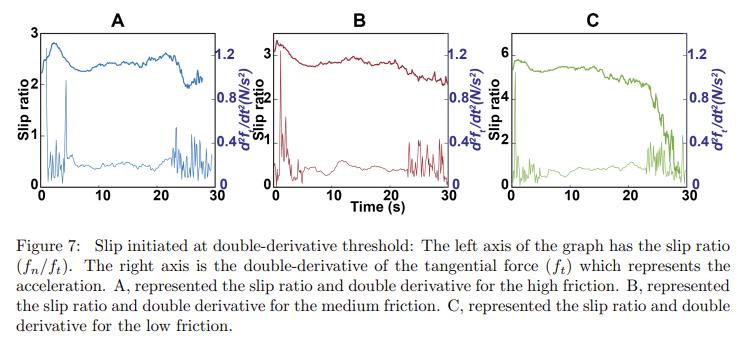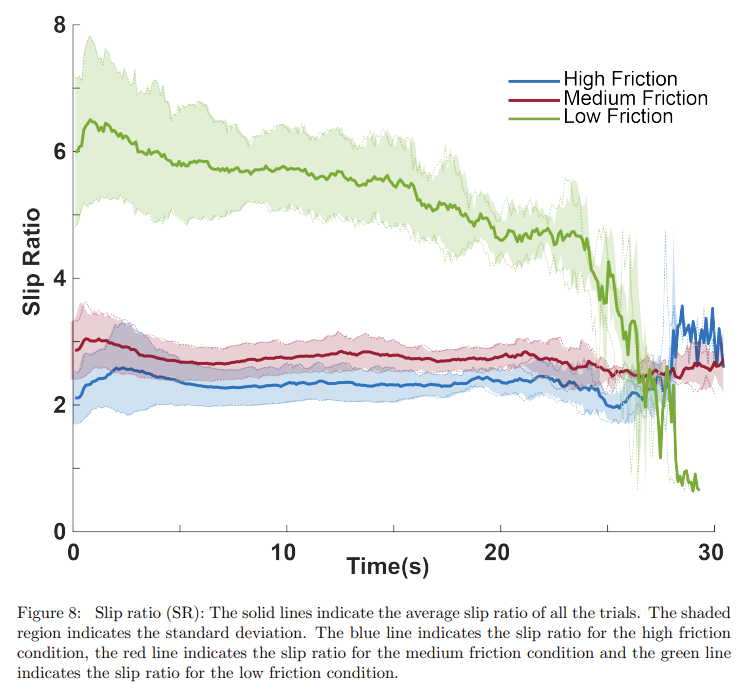Friction-Scaled Vibrotactile Feedback for Real-Time Slip Detection in Manipulation using Robotic Sixth Finger
Abstract
The integration of extra-robotic limbs/fingers to enhance and expand motor skills, particularly for grasping and manipulation, possesses significant challenges. The grasping performance of existing limbs/fingers is far inferior to that of human hands. Human hands can detect the onset of slip through tactile feedback originating from tactile receptors during the grasping process, enabling precise and automatic regulation of grip force. This grip force is scaled by the coefficient of friction between the contacting surface and the fingers. The frictional information is perceived by humans depending upon the slip happening between the finger and the object. This ability to perceive friction allows humans to apply just the right amount of force needed to maintain a secure grip, adjusting based on the weight of the object and the friction of the contact surface. Enhancing this capability in extra-robotic limbs or fingers used by humans is challenging. To address this challenge, this paper introduces a novel approach to communicate frictional information to users through encoded vibrotactile cues. These cues are conveyed on the onset of incipient slip thus allowing the users to perceive the friction and ultimately use this information to increase the force to avoid dropping of the object. In a 2-alternative forced-choice protocol, participants gripped and lifted a glass under three different frictional conditions, applying a normal force of 3.5 N. After reaching this force, the glass was gradually released to induce slip. During this slipping phase, vibrations scaled according to the static coefficient of friction were presented to users, reflecting the frictional conditions. The results suggested an accuracy of 94.53±3.05 (mean±SD) in perceiving frictional information upon lifting objects with varying friction. The results indicate the effectiveness of using vibrotactile feedback for sensory feedback, allowing users of extra-robotic limbs or fingers to perceive frictional information. This enables them to assess surface properties and adjust grip force according to the frictional conditions, enhancing their ability to grasp and manipulate objects more effectively.
Keywords: Vibro-tactile, Wearable Robotics, Haptic Feedback, friction,
extra-robotic limbs
Powered by DYNAMIXEL
All Credits Go To: Naqash Afzal, Basma Hasanen, Lakmal Seneviratne, Oussama Khatib, Irfan Hussain, Khalifa University and Stanford Robotics Laboratory
Full Research Paper: [2503.15447] Friction-Scaled Vibrotactile Feedback for Real-Time Slip Detection in Manipulation using Robotic Sixth Finger
ROBOTIS e-Shop: www.robotis.us
DYNAMIXEL Page: www.dynamixel.com
DYNAMIXEL LinkedIn: DYNAMIXEL | LinkedIn

